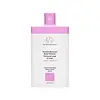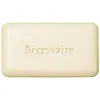What's inside
What's inside
 Key Ingredients
Key Ingredients

 Benefits
Benefits

 Concerns
Concerns

 Ingredients Side-by-side
Ingredients Side-by-side

Water
Skin ConditioningCocamidopropyl Betaine
CleansingCoco-Glucoside
CleansingGlycerin
HumectantSodium Lauroyl Methyl Isethionate
CleansingSodium Methyl Oleoyl Taurate
CleansingBambusa Arundinacea Stem Extract
Skin ConditioningPropanediol
SolventAcrylates Crosspolymer-4
Emulsion StabilisingSodium Cocoyl Glutamate
CleansingLauryl Glucoside
CleansingSalvia Hispanica Seed Oil
MoisturisingSodium PCA
HumectantCaprylic/Capric Triglyceride
MaskingTocopherol
AntioxidantSclerocarya Birrea Seed Oil
HumectantLinum Usitatissimum Seed Oil
PerfumingSqualane
EmollientVanilla Planifolia Fruit Extract
Skin ConditioningSodium Hyaluronate
HumectantSodium Lactate
BufferingPCA
HumectantAlanine
MaskingArginine
MaskingGlycine
BufferingHistidine
HumectantIsoleucine
Skin ConditioningPhenylalanine
MaskingProline
Skin ConditioningSerine
MaskingThreonine
Valine
MaskingPseudozyma Epicola/Camellia Sinensis Seed Oil Ferment Extract Filtrate
HumectantLinoleic Acid
CleansingLinolenic Acid
CleansingCalcium Gluconate
HumectantAspartic Acid
MaskingCitric Acid
BufferingGluconolactone
Skin ConditioningSodium Chloride
MaskingSodium Benzoate
MaskingWater, Cocamidopropyl Betaine, Coco-Glucoside, Glycerin, Sodium Lauroyl Methyl Isethionate, Sodium Methyl Oleoyl Taurate, Bambusa Arundinacea Stem Extract, Propanediol, Acrylates Crosspolymer-4, Sodium Cocoyl Glutamate, Lauryl Glucoside, Salvia Hispanica Seed Oil, Sodium PCA, Caprylic/Capric Triglyceride, Tocopherol, Sclerocarya Birrea Seed Oil, Linum Usitatissimum Seed Oil, Squalane, Vanilla Planifolia Fruit Extract, Sodium Hyaluronate, Sodium Lactate, PCA, Alanine, Arginine, Glycine, Histidine, Isoleucine, Phenylalanine, Proline, Serine, Threonine, Valine, Pseudozyma Epicola/Camellia Sinensis Seed Oil Ferment Extract Filtrate, Linoleic Acid, Linolenic Acid, Calcium Gluconate, Aspartic Acid, Citric Acid, Gluconolactone, Sodium Chloride, Sodium Benzoate
Sodium Palmate
CleansingSodium Palm Kernelate
CleansingWater
Skin ConditioningGlycerin
HumectantCellulose Acetate
Sclerocarya Birrea Seed Oil
HumectantNiacinamide
SmoothingCaryodendron Orinocense Seed Oil
EmollientLimnanthes Alba Seed Oil
Skin ConditioningCeramide AP
Skin ConditioningCeramide Ag
HumectantCeramide EOP
Skin ConditioningCeramide Ng
Skin ConditioningCeramide NP
Skin ConditioningSodium Gluconate
Skin ConditioningLinoleic Acid
CleansingLinolenic Acid
CleansingCholesterol
EmollientCetearyl Alcohol
EmollientSodium Chloride
MaskingTocopherol
AntioxidantDipropylene Glycol
HumectantHydrogenated Lecithin
EmulsifyingGlyceryl Stearate
EmollientSodium Palmate, Sodium Palm Kernelate, Water, Glycerin, Cellulose Acetate, Sclerocarya Birrea Seed Oil, Niacinamide, Caryodendron Orinocense Seed Oil, Limnanthes Alba Seed Oil, Ceramide AP, Ceramide Ag, Ceramide EOP, Ceramide Ng, Ceramide NP, Sodium Gluconate, Linoleic Acid, Linolenic Acid, Cholesterol, Cetearyl Alcohol, Sodium Chloride, Tocopherol, Dipropylene Glycol, Hydrogenated Lecithin, Glyceryl Stearate
 Reviews
Reviews

Ingredients Explained
These ingredients are found in both products.
Ingredients higher up in an ingredient list are typically present in a larger amount.
Glycerin is already naturally found in your skin. It helps moisturize and protect your skin.
A study from 2016 found glycerin to be more effective as a humectant than AHAs and hyaluronic acid.
As a humectant, it helps the skin stay hydrated by pulling moisture to your skin. The low molecular weight of glycerin allows it to pull moisture into the deeper layers of your skin.
Hydrated skin improves your skin barrier; Your skin barrier helps protect against irritants and bacteria.
Glycerin has also been found to have antimicrobial and antiviral properties. Due to these properties, glycerin is often used in wound and burn treatments.
In cosmetics, glycerin is usually derived from plants such as soybean or palm. However, it can also be sourced from animals, such as tallow or animal fat.
This ingredient is organic, colorless, odorless, and non-toxic.
Glycerin is the name for this ingredient in American English. British English uses Glycerol/Glycerine.
Learn more about GlycerinLinoleic Acid is also known as Vitamin F. It is a fatty acid with emollient and skin conditioning properties. Our top layer of skin, or epidermis, contains high amounts of linoleic acid naturally.
Your body uses linoleic acid to build ceramides and prostaglandins. Ceramides keep your skin's barrier hydrated and strong while prosaglandins help control inflammation and healing. Needless to say, linoleic acid is crucial for having a strong skin barrier.
One study found applying linoleic acid rich sunflower oil to be more effective at repairing the skin barrier than oleic rich olive oil.
Linoleic acid is an essential fatty acid, meaning our bodies cannot create it on its own. We need to get linoleic acid through foods such as nuts and vegetable oils.
Acne-prone skin tends to have linoleic acid and high levels of oleic acid.
Linoleic acid can also help treat acne by softening sebum to prevent clogged pores. Another study found using 2.5% linoleic acid gel for 4 weeks showed a 25% reduction in small comedones.
This ingredient can also help lighten hyperpigmentation or sun spots by disrupting the melanin production process. It also helps your skin shed melanin pigment from your skin caused by UV exposure.
Due to its role in the production of the fatty acid prostaglandin, linoleic acid can also help reduce inflammation and support wound healing.
Linoleic acid is not always fungal-acne safe; it may trigger flare-ups in sensitive individuals.
Learn more about Linoleic AcidLinolenic Acid is also known as "ALA" or alpha-linolenic acid. It is a fatty acid used to hydrate skin and hair.
This ingredient can help with soothing irritated skin and reducing hyperpigmentation by disrupting the melanin production process.
Fun fact: This ingredient is considered an essential fatty acid for humans. This means our bodies cannot naturally produce it and we must get it from food.
Some foods rich in linolenic acid include: walnuts, fish oils, soy, and canola.
A deficiency in linolenic acid may be linked to skin disorders like eczema.
Another essential fatty acid is Linoleic Acid.
Learn more about Linolenic AcidSclerocarya Birrea Seed Oil is the oil expressed from the seeds of the Marula plant. In South Africa, Marula is called "an elephant's favorite treat".
Marula seed oil is a non-fragrant oil. It is rich in fatty acids, such as oleic, linoleic, palmitic, stearic, and more. These fatty acids help hydrate the skin.
Other components of marula seed oil include vitamin E and antioxidants such as flavonoids.
Due to the fatty acid content, this ingredient may not be fungal-acne safe.
Learn more about Sclerocarya Birrea Seed OilChances are, you eat sodium chloride every day. Sodium Chloride is also known as table salt.
This ingredient has many purposes in skincare: thickener, emulsifier, and exfoliator.
You'll most likely find this ingredient in cleansers where it is used to create a gel-like texture. As an emulsifier, it also prevents ingredients from separating.
There is much debate on whether this ingredient is comedogenic. The short answer - comedogenic ratings don't tell the whole story. Learn more about comegodenic ratings here.
The concensus about this ingredient causing acne seems to be divided. Research is needed to understand if this ingredient does cause acne.
Scrubs may use salt as the primary exfoliating ingredient.
Learn more about Sodium ChlorideTocopherol (also known as Vitamin E) is a common antioxidant used to help protect the skin from free-radicals and strengthen the skin barrier. It's also fat soluble - this means our skin is great at absorbing it.
Vitamin E also helps keep your natural skin lipids healthy. Your lipid skin barrier naturally consists of lipids, ceramides, and fatty acids. Vitamin E offers extra protection for your skin’s lipid barrier, keeping your skin healthy and nourished.
Another benefit is a bit of UV protection. Vitamin E helps reduce the damage caused by UVB rays. (It should not replace your sunscreen). Combining it with Vitamin C can decrease sunburned cells and hyperpigmentation after UV exposure.
You might have noticed Vitamin E + C often paired together. This is because it is great at stabilizing Vitamin C. Using the two together helps increase the effectiveness of both ingredients.
There are often claims that Vitamin E can reduce/prevent scarring, but these claims haven't been confirmed by scientific research.
Learn more about TocopherolWater. It's the most common cosmetic ingredient of all. You'll usually see it at the top of ingredient lists, meaning that it makes up the largest part of the product.
So why is it so popular? Water most often acts as a solvent - this means that it helps dissolve other ingredients into the formulation.
You'll also recognize water as that liquid we all need to stay alive. If you see this, drink a glass of water. Stay hydrated!
Learn more about Water